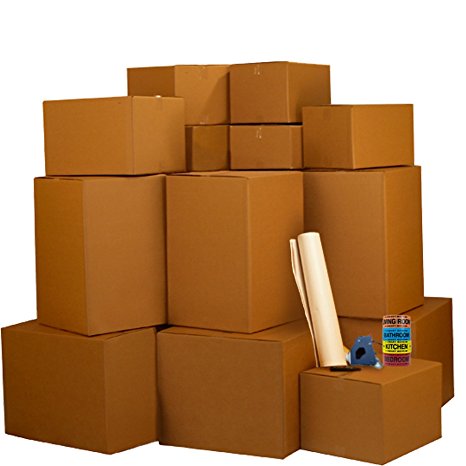The Ultimate Guide To Choosing Cardboard Boxes For Packing
Choosing the right cardboard box for packing involves considering several key factors. First, think about the size and weight of the items you need to pack. Larger, heavier items require more robust, double-walled boxes, while smaller, lighter items can be safely packed in single-walled boxes. Secondly, consider the cardboard boxes for packing purposes of the box. Are you moving, storing, or shipping items? Each scenario may require different types of boxes. For instance, moving boxes often come with handles for easier carrying, while shipping boxes might need additional reinforcement for long journeys. Additionally, think about the environment; recycled or eco-friendly cardboard options are available for those looking to reduce their carbon footprint. Finally, always ensure you have the right packing materials, such as bubble wrap, packing peanuts, and sturdy tape, to protect your items and secure the boxes properly.
Top Cardboard Boxes For Packing: A Comprehensive Review
When it comes to selecting the best cardboard boxes for packing, there are several standout options to consider. The U-Haul Medium Moving Box is a favorite for its durability and ease of use, featuring built-in handles and a robust construction. The Bankers Box Smooth Move is another top choice, offering double-walled protection and easy assembly without the need for tape. For those seeking eco-friendly options, the Eco Box Kraft Moving Boxes are made from 100% recycled materials and provide excellent strength. The Amazon Basics Moving Boxes are also highly rated for their affordability and reliability. Heavy-duty options like the Pratt Retail Specialties Heavy Duty Moving Box are ideal for packing heavier items. Each of these options has been selected based on durability, ease of use, and customer reviews, ensuring you can find the perfect box for your specific packing needs.

Cardboard Boxes For Packing: Essential Tips And Tricks
Packing with cardboard boxes efficiently requires some essential tips and tricks. First, always start by gathering all necessary supplies, including boxes of various sizes, packing tape, bubble wrap, and markers. Labeling each box with its contents and the room it belongs to can save significant time during unpacking. When packing, place heavier items at the bottom and lighter items on top to prevent damage. Use smaller boxes for heavier items like books and larger boxes for lighter, bulkier items like linens. Filling empty spaces with packing peanuts or crumpled paper can prevent items from shifting and cardboard boxes for packing breaking during transit. For added protection, wrap fragile items individually in bubble wrap and use dividers in boxes for glassware. Lastly, reinforce the bottoms and tops of boxes with extra tape to ensure they don’t open or collapse during the move.
The Environmental Impact Of Cardboard Boxes For Packing
Cardboard boxes, while extremely useful, have a significant environmental impact. The production of cardboard involves cutting down trees, which contributes to deforestation and the loss of wildlife habitats. Additionally, the manufacturing process consumes large amounts of water and energy and generates greenhouse cardboard boxes for packing gases. However, cardboard is also one of the most recyclable materials available. Recycling cardboard reduces the need for new raw materials, saving trees and decreasing landfill waste. Many cardboard boxes are made from recycled materials, which further minimizes their environmental footprint. Consumers can also mitigate the impact by reusing boxes multiple times before recycling them and choosing boxes made from sustainable sources. By being mindful of the environmental implications and opting for eco-friendly choices, we can reduce the adverse effects associated with cardboard box production and disposal.
Where To Find High-Quality Cardboard Boxes For Packing?
Finding high-quality cardboard boxes for packing is essential for ensuring the safety and security of your items. Retailers such as U-Haul, Home Depot, and Lowe’s offer a wide range of boxes specifically designed for moving and storage. Online marketplaces like Amazon and eBay also provide numerous options, often with customer reviews to help guide your selection. For those looking for more sustainable options, companies cardboard boxes for packing like EcoBox and ULINE offer eco-friendly boxes made from recycled materials. Additionally, local grocery stores, bookstores, and offices often have surplus boxes that they give away for free, which can be a cost-effective and environmentally friendly option. When selecting boxes, look for sturdy construction, preferably with double walls for added protection, and ensure they come in the sizes you need for your items.
Affordable And Durable: The Best Cardboard Boxes For Packing
Affordable yet durable cardboard boxes for packing can be found through a variety of sources. U-Haul offers budget-friendly options that don’t compromise on quality, such as their standard moving boxes which are praised for their robustness and affordability. Home Depot’s HDX line provides excellent value with sturdy construction at reasonable prices. For those looking for the cheapest options, recycled boxes from local stores or community groups can be both cost-effective and environmentally friendly. The key is to balance cost with durability; look for boxes that are rated for the weight of your items and made from high-quality materials. Buying in bulk can also lower costs significantly, especially when purchasing from online retailers or wholesale suppliers. By carefully selecting your boxes, you can ensure that your items are well-protected without overspending.
How To Select The Right Cardboard Boxes For Packing Fragile Items?
Selecting the right cardboard boxes for packing fragile items is crucial to prevent damage. First, choose boxes that are specifically designed for fragile items, such as dish pack boxes that come with dividers for glassware. Double-walled boxes provide extra strength and cushioning. Always use packing materials like bubble wrap, foam, or packing peanuts to create a protective layer around each fragile item. Ensure the boxes are not too large, as this can allow items to shift and break. Instead, use smaller boxes to keep items snug and secure. Clearly label these boxes as Fragile and indicate which side should be kept up. Reinforcing the bottom of the box with extra tape can also prevent it from collapsing under the weight of the items. By taking these precautions, you can significantly reduce the risk of damage to your fragile belongings during transit.
The History And Evolution Of Cardboard Boxes For Packing
The history and evolution of cardboard boxes for packing are fascinating. The concept of using paper for packaging dates back to ancient China, but the modern cardboard box was invented in the 19th century. In 1817, the first commercial cardboard box was produced in England. However, it was in 1890 that the corrugated cardboard box, as we know it today, was patented by Robert Gair. This innovation revolutionized packaging by providing a lightweight, durable, and cost-effective solution for shipping goods. Over the years, advancements in manufacturing processes and materials have improved the strength and versatility of cardboard boxes. Today, they are available in various sizes, shapes, and types, catering to a wide range of packing needs. The evolution of cardboard boxes continues as companies explore more sustainable materials and innovative designs to reduce environmental impact while maintaining functionality.
Conclusion
Cardboard boxes for packing are essential tools in our modern world, providing practical solutions for moving, storing, and shipping items. By understanding how to choose the right boxes, the best options available, and tips for efficient packing, you can ensure your belongings are well-protected. Additionally, being aware of the environmental impact and opting for eco-friendly choices can contribute to a more sustainable future. Whether you’re packing fragile items or seeking affordable, durable options, the knowledge gained from this guide will help you make informed decisions. The history of cardboard boxes also highlights their significant role in the evolution of packaging, showcasing their enduring value. With the right approach and tools, packing can become a smooth and efficient process, safeguarding your items and easing transitions.

Fran Peters is a dedicated writer specializing in health and medical content. With a background in healthcare and a passion for helping others lead healthier lives, Fran brings a wealth of knowledge and expertise to her writing.















Post Comment